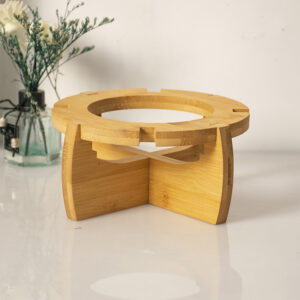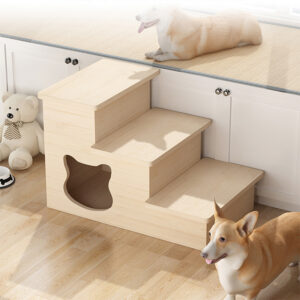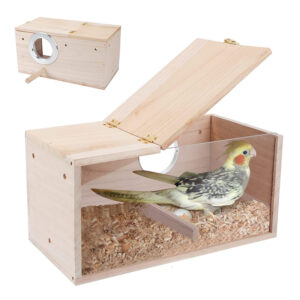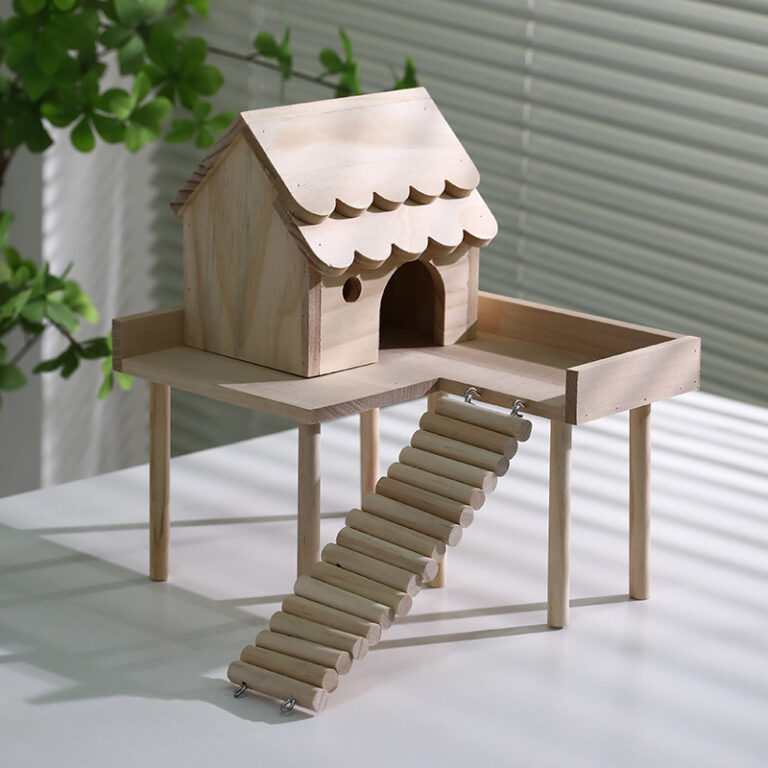
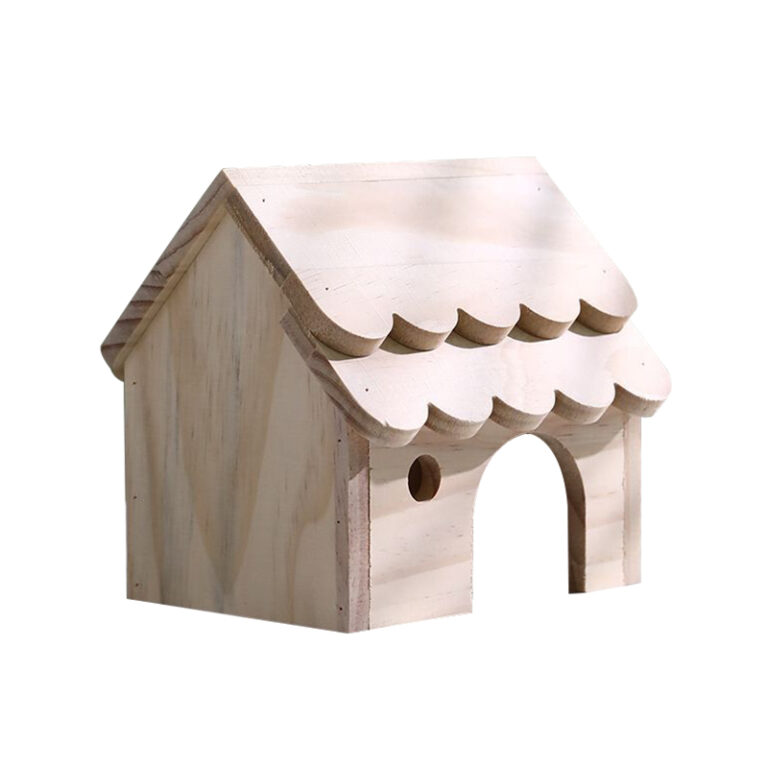
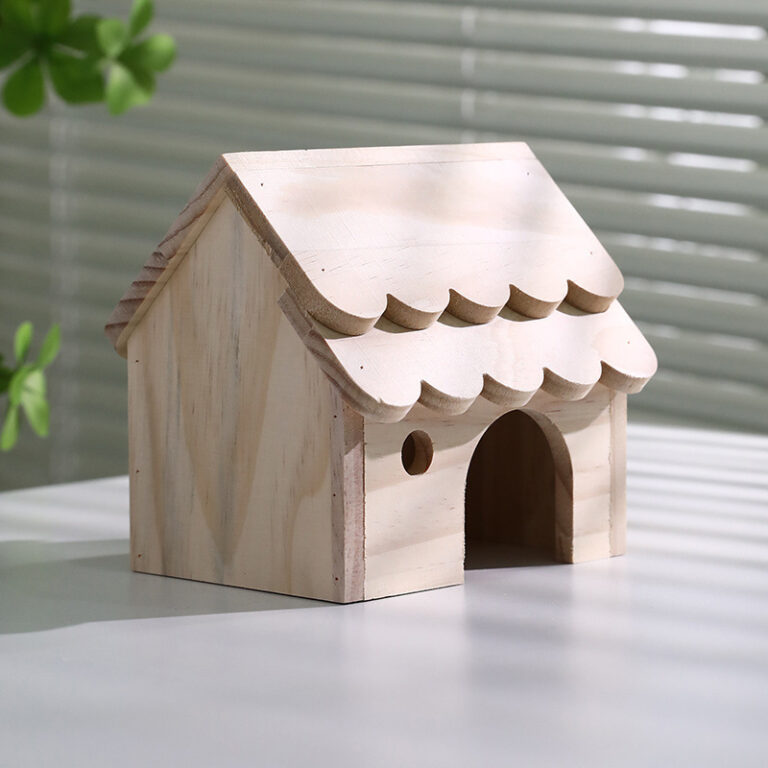
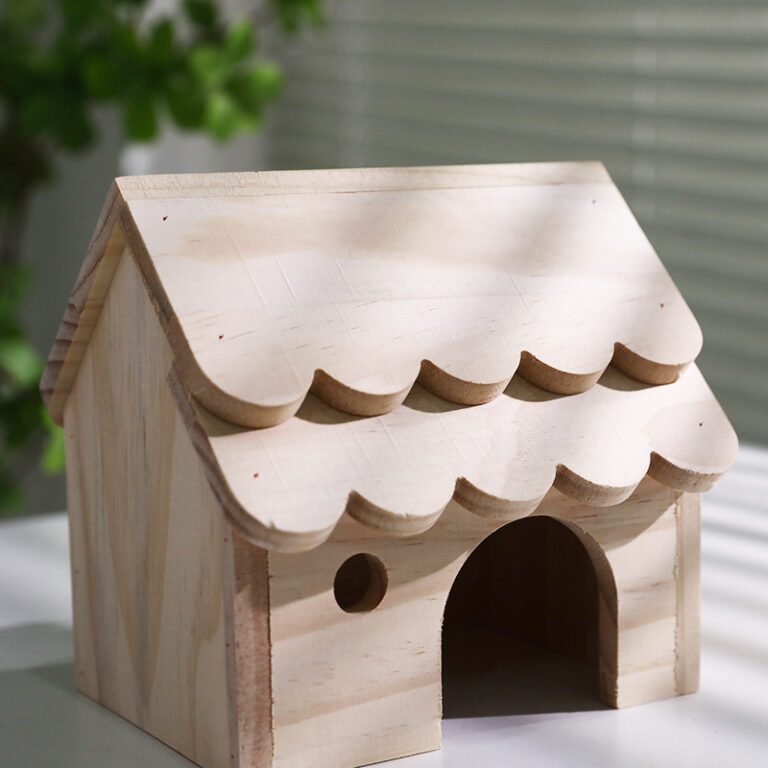
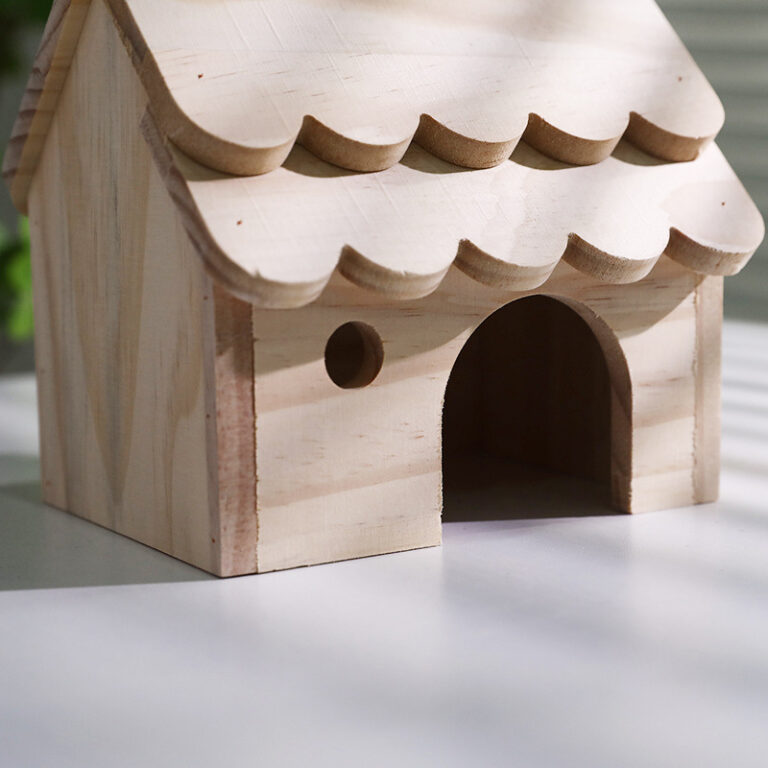
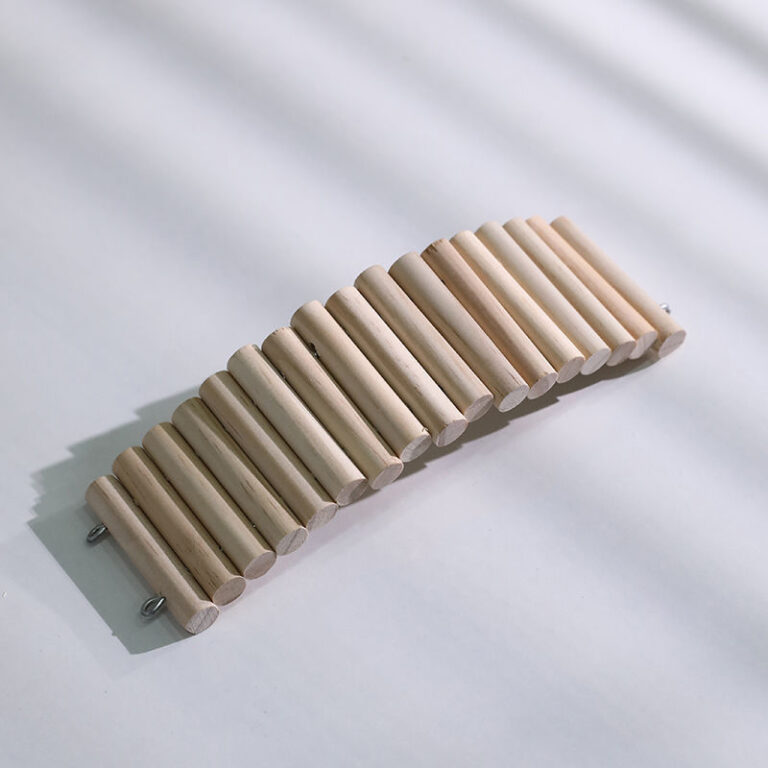
Windproof Hideout Cage Hot sale Wood Factory Customized Solid Wood Color Hamster House Wooden Pet House
A hideout cage is a specialized enclosure designed to provide a secure, stimulating, and comfortable habitat for small animals like rodents, reptiles, and birds. These cages often feature multiple levels, climbing structures, and hiding spots that mimic natural environments, promoting healthy behaviors and reducing stress. Made from durable materials such as metal, plastic, or wood, hideout cages prioritize safety and ease of maintenance, offering easy access for cleaning and interaction. Ideal for enhancing the well-being of pets, hideout cages combine functionality with an enriching environment to cater to the diverse needs of various species.
Product Description
A hideout cage is a specialized enclosure designed primarily for small animals, such as rodents, reptiles, or birds. Its primary purpose is to provide a secure, comfortable, and stimulating environment that caters to the natural behaviors and needs of these creatures. Unlike standard cages, hideout cages often feature intricate designs and customizations to create a more enriching habitat. This detailed description will explore the various aspects of hideout cages, including their design, materials, benefits, and considerations for choosing the right one.
Design and Features
- Structure and Size: Hideout come in a variety of sizes and shapes, depending on the species they are intended for. Smaller cages might be compact with multiple levels, while larger ones could resemble elaborate multi-tiered complexes. The structure often includes platforms, ramps, and tunnels to facilitate climbing, exploring, and burrowing, mimicking the natural habitats of the animals.
- Material: The construction material of a cage is crucial for ensuring the safety and comfort of the occupants. Common materials include:
- Metal: Powder-coated metal or stainless steel is often used for its durability and ease of cleaning. Metal bars are spaced to prevent escapes and ensure ventilation.
- Plastic: Non-toxic, chew-proof plastics are used for components like trays or tunnels. They are easy to clean but should be resistant to scratching and chewing.
- Wood: For a more natural look and feel, some hideout cages incorporate untreated or specially treated wood. Wood provides a warm, tactile environment but requires regular maintenance to prevent rot and ensure hygiene.
- Interior Design: Hideout cages are designed with the animals’ comfort in mind. Features might include:
- Shelters and Nests: Small, enclosed spaces where animals can retreat to sleep or hide. These are often designed to mimic natural burrows or nests.
- Climbing Structures: Ropes, branches, and platforms that allow climbing and exploration. These features are particularly important for arboreal or semi-arboreal species.
- Tunnels and Tubes: Enclosed pathways that provide hiding spots and encourage natural burrowing behaviors.
- Accessibility and Maintenance: Hideout cages are designed for easy access and cleaning. Features include:
- Removable Trays: For easy cleaning of droppings and spilled food.
- Front Doors or Panels: Large openings to facilitate access for feeding, cleaning, and interacting with the animal.
- Locks and Latches: Secure mechanisms to prevent accidental escapes and ensure safety.
- Ventilation and Lighting: Proper ventilation is essential for maintaining air quality and preventing the buildup of ammonia from urine. Some hideout cages come with built-in ventilation systems or mesh panels. Additionally, appropriate lighting is crucial for reptiles and birds, which may require specific light cycles for health and well-being.
Benefits of Hideout Cages
- Enrichment: Hideout cages are designed to provide a stimulating environment that encourages natural behaviors. Climbing structures, hiding spots, and interactive elements help reduce stress and prevent boredom.
- Safety: The secure design of hideout cages minimizes the risk of escapes and protects animals from potential hazards. For small rodents, for instance, a well-constructed cage can prevent injury and ensure they are safe from predators.
- Comfort: By replicating natural habitats, hideout cages offer a more comfortable living space for animals. This can improve their overall well-being and encourage more natural behaviors, such as foraging, climbing, and nesting.
- Ease of Care: Many hideout cages are designed for easy cleaning and maintenance, which simplifies the care routine for pet owners. Removable trays and easy-access doors streamline the process of keeping the habitat clean and hygienic.
Considerations for Choosing a Hideout Cage
- Species-Specific Needs: Different animals have different requirements. For example, a hideout cage for a hamster will differ significantly from one designed for a parrot or a snake. Research the specific needs of the species to ensure the cage provides the necessary space, features, and environment.
- Size and Space: Ensure the hideout cage is appropriately sized for the number and size of the animals. Overcrowding can lead to stress and health issues, so it’s important to provide ample space for movement and enrichment.
- Material Safety: Choose materials that are safe and non-toxic. Avoid cages with sharp edges, potential chew hazards, or materials that can be harmful if ingested.
- Ease of Assembly and Maintenance: Opt for a hideout cage that is easy to assemble and disassemble for cleaning. Consider how often you will need to clean the cage and choose a design that fits with your cleaning routine.
- Cost: Hideout cages vary in price depending on their size, materials, and features. Determine your budget and find a cage that offers the best balance between quality and cost.
Conclusion
Hideout cages are more than just enclosures—they are carefully designed habitats that enhance the quality of life for small animals. By providing a stimulating, safe, and comfortable environment, these cages help to meet the physical and psychological needs of their occupants. Whether you’re housing a playful ferret, a curious bird, or a majestic snake, a well-chosen hideout cage can make a significant difference in their overall well-being. By considering the specific needs of your pet and choosing a high-quality, thoughtfully designed cage, you can ensure a happy, healthy, and enriched life for your animal companion.


